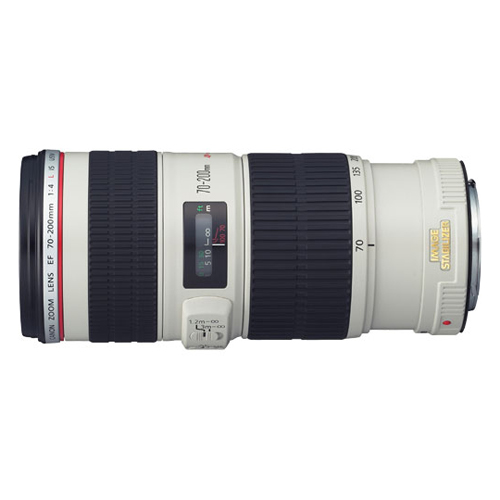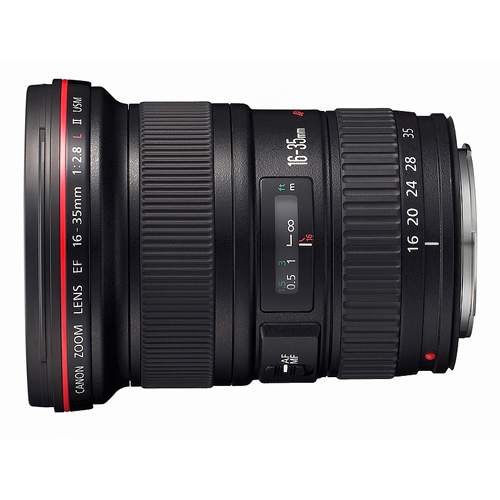Exploring the Wild
Beautiful Mountain Landscape
Although the bustling city life offers a lot of photography topics such as glamorous nightscape, sometimes it is good to take a refreshing break from it by trekking through the woods and rivers, enjoying the beauty of nature and capture the spectacular landscape with your camera.
Telephoto lens for tight composition
To capture mountain landscape, we have more options apart from a wide-angle lens. Although a wide-angle can capture the spectacular scene in full with its wide angle of view, a telephoto lens can create photos with a distinctive touch. The long focal length of a telephoto lens can achieve compressed perspective, helping to create a focus towards a particular element among the chaotic woods through a tight composition. Also, the different shades of trees captured can create a greater sense of depth and make the photo more one-of-a-kind.
For easier shooting, we can use a compact telephoto zoom lens such as EF 70-200mm f/4L IS USM. Its 70-200mm focal range offers the flexibility to capture medium and long range shots. Coupled with an optical Image Stabilizer, we can shoot with a handheld camera with ease and stability even without a tripod.
For easier shooting, we can use a compact telephoto zoom lens such as EF 70-200mm f/4L IS USM. Its 70-200mm focal range offers the flexibility to capture medium and long range shots. Coupled with an optical Image Stabilizer, we can shoot with a handheld camera with ease and stability even without a tripod.

Title : 《秋日禾木村》 Club Canon Member : Christina Leung
EOS 400D • EF 70-200mm f/4L IS USM • f/8 • 1/800s • ISO 800
EOS 400D • EF 70-200mm f/4L IS USM • f/8 • 1/800s • ISO 800
Pick a right time to shoot
Time is an important factor for mountain landscape. For example, shooting at dawn or dusk with light coming from the side can add a sense of depth to the photo, and create more atmospheric result with shades of warm golden color. Unless it is your intention to take photos at dawn or dusk, normally the best time to capture is before sunrise or after sunset – i.e. around 7-9am or 3-4pm.
Take the below photo as an example. We should avoid shooting directly into the sun to minimize ghosting and flare. We can also apply a ND filter for better result. To capture starburst sunshine, use a smaller aperture such as f/16 or f/22. The use of a slow speed shutter can make the weeds look like sea waves in the photo.
Take the below photo as an example. We should avoid shooting directly into the sun to minimize ghosting and flare. We can also apply a ND filter for better result. To capture starburst sunshine, use a smaller aperture such as f/16 or f/22. The use of a slow speed shutter can make the weeds look like sea waves in the photo.

Title : 《空中交響》 Club Canon Member : Shining
EOS 5D Mark III • EF 16-35mm f/2.8L II USM • f/22 • 1/30s • ISO 200
EOS 5D Mark III • EF 16-35mm f/2.8L II USM • f/22 • 1/30s • ISO 200
The seasonal charms
Most mountain landscape photos are a splash of colors in the shades of green and yellow. In fact, the charms of mountains and forests are their changing faces, which can look vital, serene or sometimes desolate. The photo below was taken with a telephoto lens to create a desolate mood. It captured a special scene in the wild when the snow danced in the wind, creating a mist covering the woods.
When taking photos of snow, we need to pay attention to the exposure. Normally we need to increase the exposure compensation as the strong reflection from the snow will mislead the metering system of the camera, making the photo under-exposed with snow looking gray. However, for the below photo, in order to capture the desolateness of the snow, mountain and forest, we can deliberately under-expose the image to retain a richer gradation of the trees and snow for a watercolor painting look and feel.
When taking photos of snow, we need to pay attention to the exposure. Normally we need to increase the exposure compensation as the strong reflection from the snow will mislead the metering system of the camera, making the photo under-exposed with snow looking gray. However, for the below photo, in order to capture the desolateness of the snow, mountain and forest, we can deliberately under-expose the image to retain a richer gradation of the trees and snow for a watercolor painting look and feel.

Title : 《Snow & Fog》 Club Canon Member : Samuel
EOS-1D Mark IV • EF 300mm f/2.8L IS USM+1.4x Extender • f/5.6 • 1/640s • ISO 800
EOS-1D Mark IV • EF 300mm f/2.8L IS USM+1.4x Extender • f/5.6 • 1/640s • ISO 800
Use of reflection to enrich the composition
When it comes to mountain landscape, apart from the flourishing greens, we can also take photos with a lake reflection. For photo of this kind, it is better to shoot at early morning as the mist can create a more atmospheric result. Besides, we also need a rigid tripod and pay attention to the horizontal leveling as a tilted composition will ruin the sense of balance.
For exposure setting, if we use average metering in a scene of dim lake surface and bright sky, the sky may result in over-exposure and turn white with lack of details and colors. Therefore, we should use manual exposure setting with exposure compensation (to lower the exposure) to retain the sky colors. We can also use a Graduated Neutral Density (GND) filter to balance out the difference in brightness between the sky and lake so as to capture more details in the reflection.
For exposure setting, if we use average metering in a scene of dim lake surface and bright sky, the sky may result in over-exposure and turn white with lack of details and colors. Therefore, we should use manual exposure setting with exposure compensation (to lower the exposure) to retain the sky colors. We can also use a Graduated Neutral Density (GND) filter to balance out the difference in brightness between the sky and lake so as to capture more details in the reflection.

Title : 《秋紅》 Club Canon Member : Nel
EOS 5D Mark III • EF 16-35mm f/2.8L II USM • f/5.0 • 1/50s • ISO 800
EOS 5D Mark III • EF 16-35mm f/2.8L II USM • f/5.0 • 1/50s • ISO 800
Proper trimming for more spectacular look and feel
The aspect ratio of a photo will have a direct impact on how people feel about a photo. With a proper trimming, we can make photos look more spectacular. This photo of Grand Canyon was taken with the EF 70-200mm f/2.8L IS II USM telephoto zoom lens. Although a wide-angle lens can be used in this situation, the image distortion that comes with a super wide-angle lens is undesirable. This photo, after cropping to a wide aspect ratio, looks like a shot taken with a wide-angle lens and is equally spectacular. Besides, by trimming out the sky, the mountain on the left looks more prominent. Taken at an early morning, this photo used auto white balance to capture the warm touch of sunrise.

Title : 《大峽谷》 Club Canon Member : andylo
EOS-1Ds • EF 70-200mm f/2.8L IS II USM • f/11 • 1/80s • ISO 100
EOS-1Ds • EF 70-200mm f/2.8L IS II USM • f/11 • 1/80s • ISO 100








